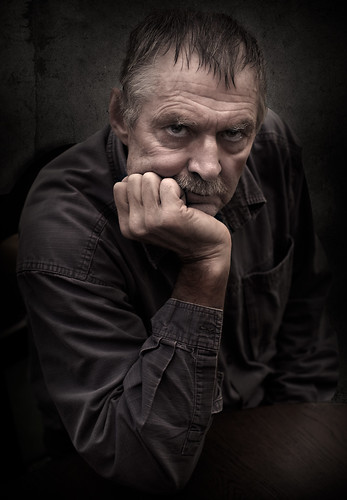Titles and introductions! Impactful image v. portrait that speaks some truth.
Firstly, thanks for all the comments guys, much appreciated.
Hi Winston, in my opinion what information yuou decide to append to an image largely depends on what the intended use of the image is. For example reportage work, where it is important that the viewer understands the context and story behind an image.
I don't think that such an approach is necessary for Fine Art Portraiture, as in the case of this image, I want the viewer to formulate their own impressions about the image, and not be influenced by any contextual text.
Matt,
Am I wowed? Yes! But then what? How do I move from that point. It's not like i'm seeing another Magritte image after having travelled to almost every recent exhibit in so many museums around the world. For those I have the books of the exhibit and a library of memories and many scholarly articles to refer to. So to your remarkable picture which for sure, no one will fail to look at. To start with, I'm impressed by the demanding noticeability of your well engineered portrait. I like it and am impressed. So I just need to know where to place my thoughts and how to reference what I find.
I do not really know a body of your work enough to simply place the relevance of it and evaluate its significance without sufficient introduction. That's why we have, for at least the lesser folk like me, at least, introductions and titles. I do appreciate the link to your blog. It's educational and interesting to learn how photographers tackled the stage dramatic portrait in the past. However, that was then and this is now and furthermore, that was their time and now it's yours. We might pay homage to them, learn from them but I'd say let's perhaps show how we might depart from where they reached. What should we should look out for in your new "Matt" approach to the strong emotive portrait.
Yes, I've heard so many tell us say "The art should speak for itself!" Well, that's fine if it's a Gaugin painting, a Brahms Walz, another Duchamp toilet, a Frank Gehry building or a Maddonna Bra Dress!
The fact is that in these cases, we already know the language of the artists works. After a few exhibits and when it comes to retrospective of my work, (how I wish), maybe I'll need neither introduction nor a title, LOL!
Why is your father shown that way? How does it bring his character forward to us? Is it true that it represents him better than the photograph you made with all the imagination, skill and emotional motivation you have devoted to this just in the taking of the picture the right way? IOW, without a whole workflow to bring out wrinkles and make the eye pop? As you yourself point out, Irving Penn took extreme pains to set up the mood
at the time of the photograph.
I'm not saying that the processing effects are
not effective. The question is why do you think your pictures benefit as portraits this way? I think that we can accept the rough concept that the job of the portrait is to convey some communication of the essence of a person and their place in our culture to the world.
So here, in this case, we have to look to your own knowledge of you father to find out if you did a good job or not. I do not know your father. Is he, indeed, that sinister and tested by life where pressures have carved stress into his features? Only you can tell us in what way the admittedly very impactful image you deliver represents your father's
inner person that he and his loved ones live with or or the
outer face the rest of the world experiences?
I feel that if you can help us connect the dots, you will acquire a host of new followers.
Asher


